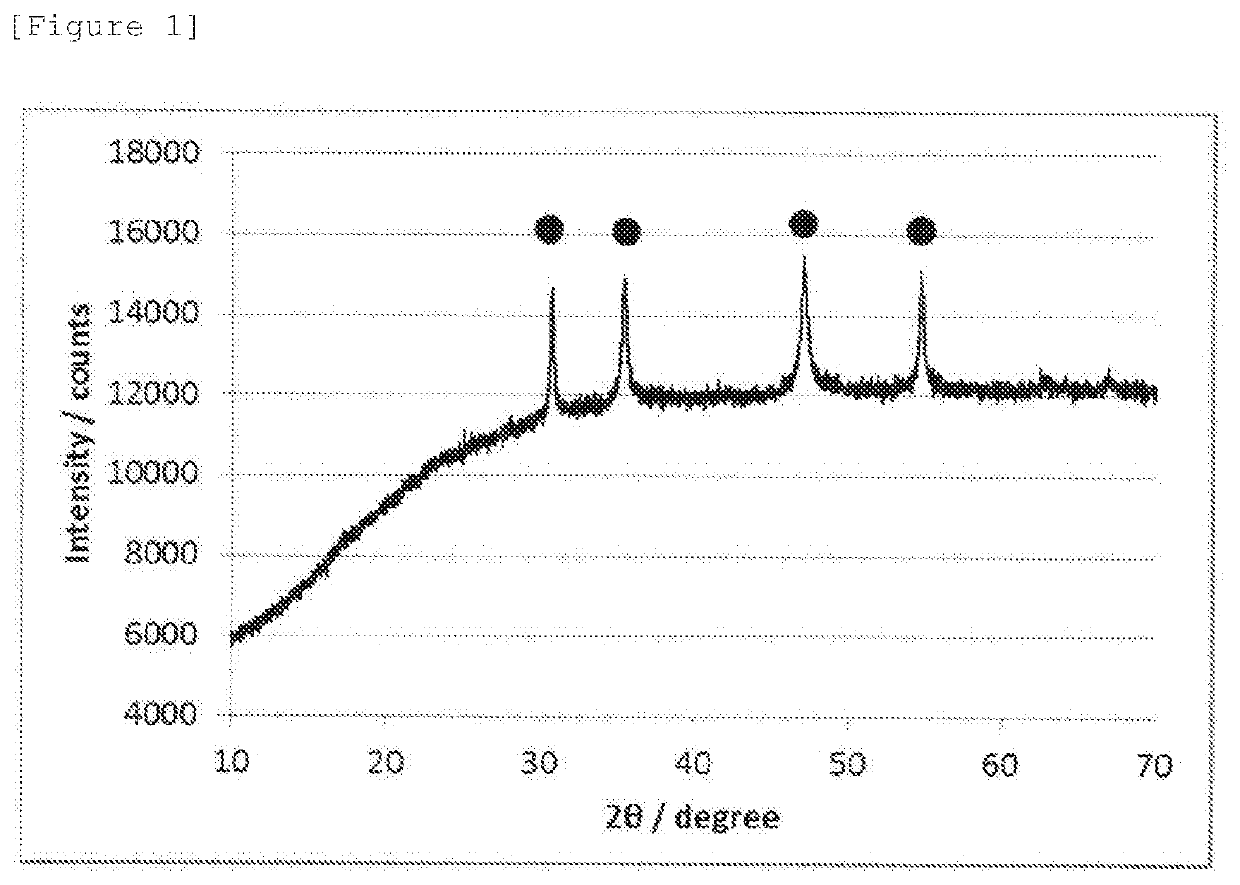Oxygen reduction catalyst, electrode, membrane electrode assembly, and fuel cell
a technology of membrane electrodes and catalysts, which is applied in the direction of fuel cells, cell components, electrical equipment, etc., can solve the problems of deterioration of activity, large cost and resource problems, and material stability which is extremely limited in the operating environment of p
- Summary
- Abstract
- Description
- Claims
- Application Information
AI Technical Summary
Benefits of technology
Problems solved by technology
Method used
Image
Examples
example 1
(Catalyst Preparing Step)
[0065]40 mL of super dehydration ethanol (manufactured by Wako Pure Chemical Industries, Ltd.) was added to 0.291 g of cobalt nitrate hexahydrate (manufactured by Wako Pure Chemical Industries, Ltd.) and 0.343 g of thiourea (manufactured by Wako Pure Chemical Industries, Ltd.) using a PTFE inner case having a volume of 100 ml in a 100 ml set of a high pressure reaction decomposition vessel (model number HU-100, manufactured by SAN-AI Kagaku Co. Ltd.) as a container, followed by stirring to prepare a precursor solution. The precursor solution was inserted into a high pressure reaction decomposition vessel as an outer case of the 100 ml set of the high pressure reaction decomposition vessel under an air atmosphere for sealing in a state where the precursor solution was placed in the PTFE inner case. The precursor solution was subjected to a pressurizing heat treatment in a sealing system at 200° C. for 8 hours using a hot stirrer (model number: HM-19 G-U) and ...
example 2
[0069]An oxygen reduction catalyst (2) was prepared in the same manner as in Example 1 except that the amount of thiourea was changed to 0.228 g. The oxygen reduction catalyst (2) was subjected to electrochemistry measurement, powder X-ray diffractometry, and X-ray photoelectron spectrometry in the same manner as in Example 1. The oxygen reduction catalyst (2) was confirmed to have a CoS hexagonal structure, and diffraction peaks assigned to other crystal structures were not observed. The electrode potential, and the S—Co / S—O peak area ratio calculated from the XPS spectrum of S2p are shown together in Table 1.
example 3
[0070]An oxygen reduction catalyst (3) was prepared in the same manner as in Example 2 except that a processing time at 200° C. was changed to 24 hours. The oxygen reduction catalyst (3) was subjected to electrochemistry measurement, powder X-ray diffractometry, and X-ray photoelectron spectrometry in the same manner as in Example 1. The oxygen reduction catalyst (3) was confirmed to have a CoS hexagonal structure, and diffraction peaks assigned to other crystal structures were not observed in the X-ray diffraction spectrum. The electrode potential, and the S—Co / S—O peak area ratio calculated from the XPS spectrum of S2p are shown together in Table 1.
PUM
| Property | Measurement | Unit |
|---|---|---|
| 2θ | aaaaa | aaaaa |
| 2θ | aaaaa | aaaaa |
| 2θ | aaaaa | aaaaa |
Abstract
Description
Claims
Application Information
 Login to View More
Login to View More - R&D
- Intellectual Property
- Life Sciences
- Materials
- Tech Scout
- Unparalleled Data Quality
- Higher Quality Content
- 60% Fewer Hallucinations
Browse by: Latest US Patents, China's latest patents, Technical Efficacy Thesaurus, Application Domain, Technology Topic, Popular Technical Reports.
© 2025 PatSnap. All rights reserved.Legal|Privacy policy|Modern Slavery Act Transparency Statement|Sitemap|About US| Contact US: help@patsnap.com


